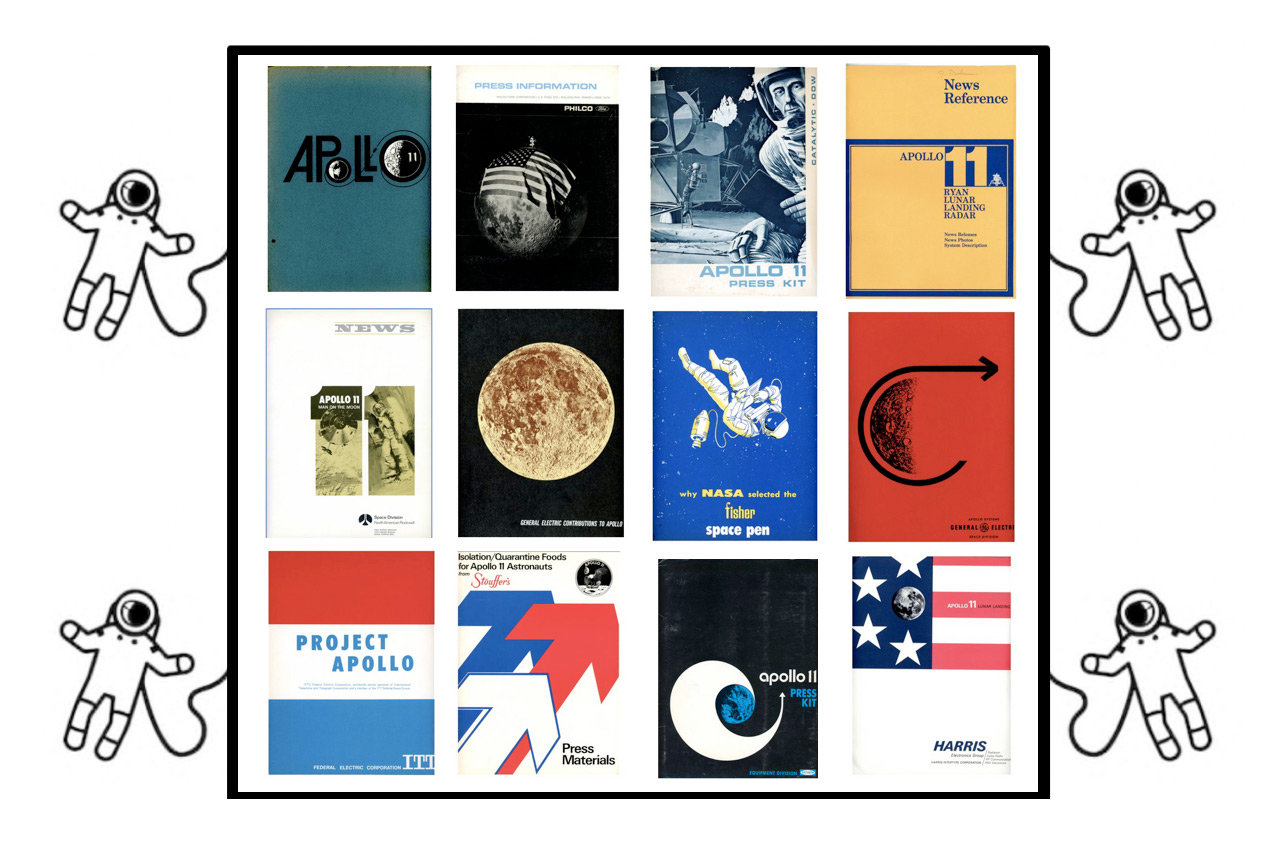Apollo Press Kits Website Showcases Moon Landing Media Guides

A new online archive is showcasing the original guides to the historic Apollo 11 moon landing mission: 50-year-old press kits.
ApolloPressKits.com, curated by David Meerman Scott, offers free access to high-quality scans of more than three dozen company, contractor and government-prepared press kits that documented the diverse aspects of the historic 1969 lunar expedition. From NASA to Stouffer's and IBM to TWA Airlines, the archive details the mission's milestones and food menus, guidance software and guided tours.
"I started collecting press kits from the Apollo 11 mission that were issued by the contractors because they were an intersection of two of the things that are important to my life," said Scott, a marketing and public relations strategist who is also a massive Apollo enthusiast. "Once I realized I likely have the most complete set of press kits from the Apollo 11 mission anywhere in the world, more than 40 different press kits now, I decided to share them with collectors, academics, graphic design and vintage photograph enthusiasts, as well as PR professionals."
Related: Building Apollo (Photos)
Scott, who co-authored the 2014 book, "Marketing the Moon: The Selling of the Apollo Lunar Program" (MIT Press), has organized the Apollo 11 press kits on his new website into seven categories, including official NASA issues; kits describing the activities on Earth, during the launch and on the moon; kits devoted to the spacecraft; and press materials dedicated to the coverage and celebration of the nine-day mission.
Some of the press kits are well known; for example, NASA's own kit has been re-issued as a commemorative publication. Other kits are familiar to space history enthusiasts, including Grumman's (now Northrop Grumman) and North American Rockwell's (now Boeing) Apollo Spacecraft News Reference, which offered a deep dive into specifics of the Apollo command, service and lunar modules.
And then there are the unexpected press kits that detail the sometimes surprising contributions to Apollo 11 by consumer-focused companies.
Breaking space news, the latest updates on rocket launches, skywatching events and more!
"Stouffer's provided the meals eaten by the astronauts while they were in [post-flight] quarantine in the Lunar Receiving Lab! Sure, it is a minor aspect of the Apollo missions, but for Stouffer's it was a marketing opportunity," said Scott in an interview with collectSPACE.com.
Similarly, Omega promoted its Speedmaster as the "Astronaut's Watch," and Fisher publicized its "unique new Space Pen" as already being used on Apollo and Soviet Soyuz flights. Hasselblad opted to wait until after the Apollo 11 mission was over to highlight the photos that Neil Armstrong, Buzz Aldrin and Michael Collins captured using its cameras.
Even the former Trans World Airlines, better known as TWA, published a brochure advertising the public tours it operated for NASA at John F. Kennedy Space Center in Florida.
Beyond press releases and fact sheets, some of the Apollo 11 mission contractors adopted a more creative approach to their media materials.
"I particularly love the computer-like cardboard calculators created by several contractors," said Scott. "For example, North American Rockwell produced an Apollo Mileage and Speed Converter that allowed members of the media following the mission to convert data like feet per second as heard on the NASA audio feeds to statute miles per hour that is more easily understood by their readers."
Grumman, NASA's prime contractor for the lunar module, took a cue from "Gray's Anatomy" (the textbook, not the TV show) and produced a visually-rich dissection of its moon lander, using translucent pages to peel away the spacecraft's layers.
"I am fascinated how the contractors lovingly created these materials to tie their company to the epic Apollo 11 mission. I am imagining the entire company was proud to be working on Apollo," said Scott. "It is also interesting to note that many of the contractors were also supplying the U.S. military during the Vietnam War, so the good news of Apollo might have offset the negativity associated with the war in the late 1960s."
Regrettably, said Scott, the materials archived on ApolloPressKits.com represent an almost bygone format.
"Few companies issue hard copy press kits anymore. It's a lost art," said Scott. "Sure, there are online press kits, but they aren't the same as these wonderful documents."
- Eleven hidden space history details in new documentary 'Apollo 11'
- Watch NASA's Apollo 11 Moonwalk Moments in This Archive Video
- Lunar Legacy: 45 Apollo Moon Mission Photos
Follow collectSPACE.com on Facebook and on Twitter at @collectSPACE. Copyright 2019 collectSPACE.com. All rights reserved.

Robert Pearlman is a space historian, journalist and the founder and editor of collectSPACE.com, a daily news publication and community devoted to space history with a particular focus on how and where space exploration intersects with pop culture. Pearlman is also a contributing writer for Space.com and co-author of "Space Stations: The Art, Science, and Reality of Working in Space” published by Smithsonian Books in 2018.
In 2009, he was inducted into the U.S. Space Camp Hall of Fame in Huntsville, Alabama. In 2021, he was honored by the American Astronautical Society with the Ordway Award for Sustained Excellence in Spaceflight History. In 2023, the National Space Club Florida Committee recognized Pearlman with the Kolcum News and Communications Award for excellence in telling the space story along the Space Coast and throughout the world.

